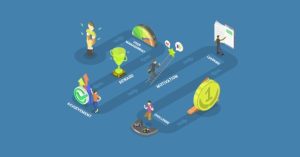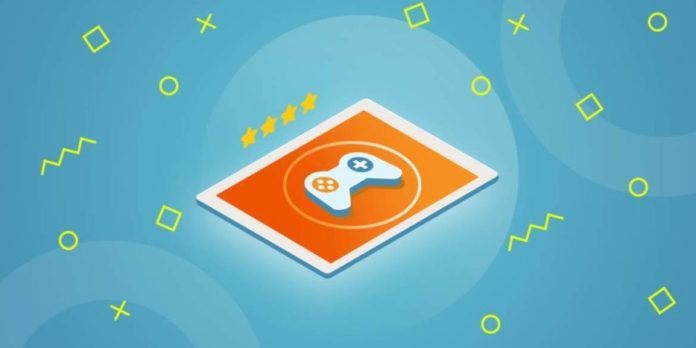Gamification is a buzzword these days. The word suggests using game components, machinists and technologies in a non-game context to acquire tangible goals; for example, at work and in everyday life.
Gamification of training means not only the use of ready-made games but also the transformation of the entire educational process into a game. For example, on an online learning platform, users receive points for completing homework, and a student rating is formed based on the number of issues. The desire to lead the rankings and dominate the social group provides an incentive to complete more tasks and gain points.
The game approach in teaching has already proven its effectiveness compared to traditional methods. People of all ages like games, so they are used in all areas of education – in enterprise e-learning and higher education, and for training staff in companies. Due to the game, tedious tasks become interesting, and complex ones become simple. Games involve a person in the process and facilitate the perception of information.
What Makes Custom Games a Great Choice for Training?
Gamified learning uses people’s natural tendencies to compete and achieve to gain performance. But how exactly does this work in terms of neurophysiology?
It activates the production of various hormones in our brains.
- Dopamine is a hormone. When is it produced in training gamification? For example, a person sees on the progress bar that only 10% of the course remains to do. The student looks at their progress and understands that they have done a lot of work, and the goal – completing the course – is close.
- Endorphins are hormones of joy or relief from pain. This is a common reason why people become addicted to games. For example, a student achieved a goal when they received points for a completed task or passed the next level.
- Serotonin – hormonal status. For example, it is produced when a person takes a large jump in the overall ranking or receives a badge for having trained 10 days in a row.
What learning processes can be gamified?

Make a reward system.
To run with inspiration, you need a sausage on a fishing rod that looms in front of you and promises that you will proudly eat it at the finish line. Such motivating incentives are also needed in training. These can be points, medals, and statuses for passing the training stages. To enhance the effect, data on employees’ success should be publicly available – this will create a healthy competitive atmosphere and a nurturing environment for learning. If resources allow, rewards can be tangible: the ability to buy something in the rewards store (books, courses, all sorts of things for self-development and health) with points.
Key factors for gamification of corporate training

- Determine the goal of gamification – getting more training, engaging employees in activity, team building, etc. Write down this goal. Ideally, it should be delivered using SMART technology.
- Analyse who will be a participant in gamification, ideally using the Empathy Map method. In this way, you will deeply analyse the needs of users and be able to create the most convenient game for them.
- Determine the budget. The gamification course involves accumulating points or chips that the participant can exchange for prizes. In my practice, for example, I gave prizes related to education: books, board games, or flash drives.
How to implement gamification in training
Once you know the benefits of gamification learning, the next step is how you will use it in learning.
Chances are you already have an online corporate training LMS, but what is the process for adding gamification to it?
Here are a few steps to infuse your learning with corporate training gamification.
Use gamification in existing training
Creating games can be somewhat expensive and time-consuming, so take a look at the materials you already have. Consider where you can insert game elements. Skim for areas where you enjoy working to solve issues and change conduct. Then add game components to these points of the method.
Add avatar login features
Regarding operating avatars, if your learning platform has a simple login component, authorise groups to revise and modify their profiles to match their personalities. Also consider adding a login function to the command. For example, HR employees can access the group HR activity feed.
Change the format of difficult lessons
We touched on this a bit earlier, but with gamification in training, complex sessions need to be broken down into sub-workouts. You must complete one section of the game before moving on to the next. Once you complete all sections of the game, you will win. Create an exciting storyline – a story that will captivate users as they get to know it. E-learning should be like an exciting journey.
Offer feedback throughout courses
Rankings are great for creating healthy competition between students. Everyone strives to be the best, to see their name at the top of the list, so they learn more actively. You can divide all users into several groups and make separate ratings for each group.
Elevate your learning platform
Teams and companies know that learning is essential. The problem sometimes is that it’s an afterthought. For example, you launch a new product and then realise that your salespeople need to be trained on that new product. Teams must periodically access their platform to keep learning at the forefront.
Disclaimer: This article contains sponsored marketing content. It is intended for promotional purposes and should not be considered as an endorsement or recommendation by our website. Readers are encouraged to conduct their own research and exercise their own judgment before making any decisions based on the information provided in this article.


































